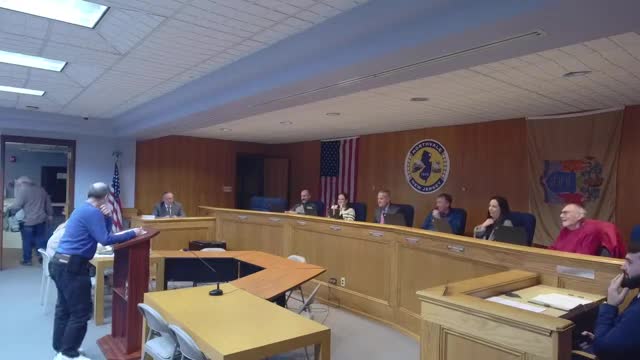Council Faces Backlash Over Controversial Parking Ordinance Change
November 14, 2024 | Northvale, Bergen County, New Jersey
This article was created by AI summarizing key points discussed. AI makes mistakes, so for full details and context, please refer to the video of the full meeting. Please report any errors so we can fix them. Report an error »

During a recent council meeting, resident Chris Bombino raised concerns regarding a recent change to a long-standing parking ordinance on Chestnut Street, which previously prohibited parking at all times. The ordinance was altered on October 9, 2024, to accommodate increased traffic from the Northbound building, which has seen a surge in attendance post-COVID.
Bombino, who lives at the intersection of Rockland Avenue and Chestnut Street, questioned the rationale behind the change, noting that a similar request from Joint Lake Church for parking on Chestnut was denied two years prior. Council members attributed the decision to the growth in attendance at the church and the need to alleviate parking congestion on Walnut Street, which had become a safety concern.
Despite the ordinance change, Bombino expressed worries about potential traffic issues, particularly regarding the lack of a formal traffic study to assess the impact of the new parking availability. Council members acknowledged that no study was conducted, citing the limited hours of parking and the small number of spaces added as reasons for this decision.
The discussion also touched on the historical context of the parking restrictions, with Bombino referencing traffic studies from 2011 that were part of a variance process for the church. He raised the possibility that these studies may no longer be valid and questioned whether the council had considered the stipulations of the original variance before making the ordinance change.
In response, council members clarified that the authority to regulate parking lies with the mayor and council, not the planning board, and emphasized that the planning board's role does not extend to parking regulations. Bombino was advised that he could review the variance stipulations at the building department, as they are public documents.
The meeting highlighted the ongoing challenges of balancing community growth with traffic management and safety, as residents seek clarity on how changes in regulations will affect their neighborhoods.
Bombino, who lives at the intersection of Rockland Avenue and Chestnut Street, questioned the rationale behind the change, noting that a similar request from Joint Lake Church for parking on Chestnut was denied two years prior. Council members attributed the decision to the growth in attendance at the church and the need to alleviate parking congestion on Walnut Street, which had become a safety concern.
Despite the ordinance change, Bombino expressed worries about potential traffic issues, particularly regarding the lack of a formal traffic study to assess the impact of the new parking availability. Council members acknowledged that no study was conducted, citing the limited hours of parking and the small number of spaces added as reasons for this decision.
The discussion also touched on the historical context of the parking restrictions, with Bombino referencing traffic studies from 2011 that were part of a variance process for the church. He raised the possibility that these studies may no longer be valid and questioned whether the council had considered the stipulations of the original variance before making the ordinance change.
In response, council members clarified that the authority to regulate parking lies with the mayor and council, not the planning board, and emphasized that the planning board's role does not extend to parking regulations. Bombino was advised that he could review the variance stipulations at the building department, as they are public documents.
The meeting highlighted the ongoing challenges of balancing community growth with traffic management and safety, as residents seek clarity on how changes in regulations will affect their neighborhoods.
View full meeting
This article is based on a recent meeting—watch the full video and explore the complete transcript for deeper insights into the discussion.
View full meeting
